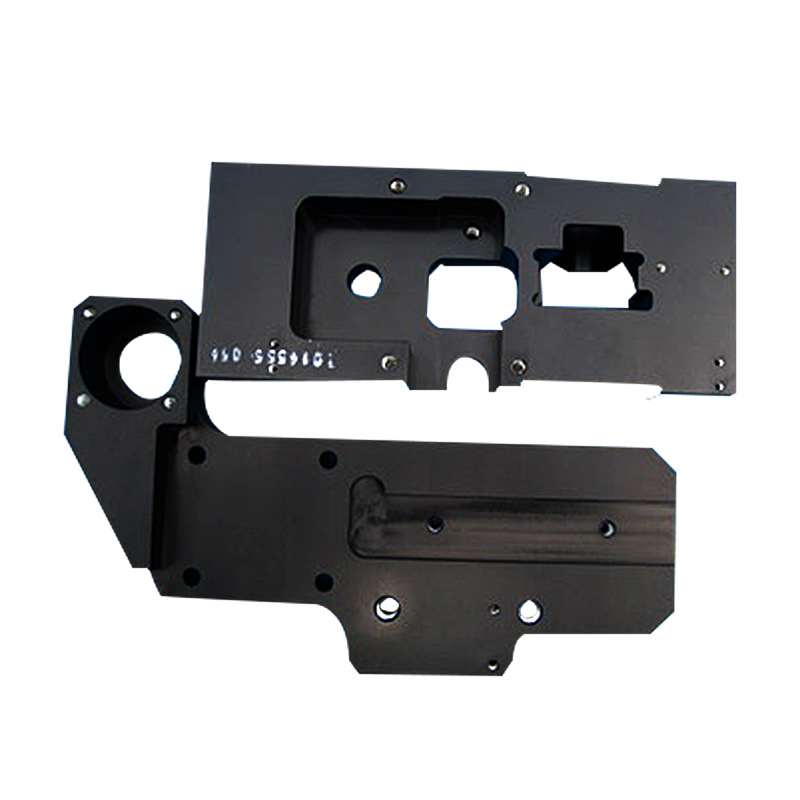The die-casting mold consists of two parts, namely the covering part and the movable part, and the part where they combine is called the parting line. In hot chamber die casting, the covering part has a gate, while in cold chamber die casting, it is an injection port.
Molten metal can enter the mold from here, and the shape of this area matches the injection nozzle in hot chamber die-casting or the injection chamber in cold chamber die-casting. The active part usually includes a push rod and a runner, which is a channel between the gate and the mold cavity through which molten metal enters the mold cavity.
The covering part is usually connected to a fixed pressing plate or front pressing plate, while the movable part is connected to a movable pressing plate. The mold cavity is divided into two mold cavity inserts, which are independent components that can be relatively easily removed or installed from the mold through bolts.
 The mold is specially designed, and when the mold is opened, the casting will remain in the moving part. In this way, the push rod of the movable part will push out the casting. The push rod is usually driven by a pressure plate, and it will accurately use the same amount of force to simultaneously drive all the push rods, so as to ensure that the casting is not damaged. After the casting is pushed out, the pressure plate shrinks and retracts all the push rods, preparing for the next die-casting.
The mold is specially designed, and when the mold is opened, the casting will remain in the moving part. In this way, the push rod of the movable part will push out the casting. The push rod is usually driven by a pressure plate, and it will accurately use the same amount of force to simultaneously drive all the push rods, so as to ensure that the casting is not damaged. After the casting is pushed out, the pressure plate shrinks and retracts all the push rods, preparing for the next die-casting.
Due to the fact that the casting is still in a high-temperature state during demolding, only with a sufficient number of push rods can the average pressure on each push rod be small enough to prevent damage to the casting. However, the push rod still leaves traces, so it must be carefully designed so that the position of the push rod does not have too much impact on the operation of the casting.
Other components in the mold include core slides, etc. Cores are components used to make holes or openings in castings, and they can also be used to increase the details of castings. There are three main types of cores: fixed, movable, and loose. The direction of the fixed core is parallel to the direction of the casting coming out of the mold, and they are either fixed or permanently connected to the mold.
The movable core can be arranged in any direction other than the direction of detachment. After the casting solidifies and before opening the mold, a separation device must be used to remove the movable core from the mold cavity.
The slider is very similar to the movable core, with the biggest difference being that the slider can be used to create a concave surface. The use of cores and sliders in die casting can significantly increase costs. Loose cores, also known as extraction blocks, can be used to manufacture complex surfaces, such as threaded holes. Before each cycle begins, it is necessary to manually install the slider and finally push it out together with the casting.
Then remove the loose core. Loose core is the most expensive core because manufacturing it requires a lot of labor and increases cycle time.
The discharge port is usually thin and long (approximately 0.13 millimeters), so the molten metal can quickly cool down and reduce waste. In the die-casting process, there is no need to use a riser because the molten metal has a high pressure, which ensures a continuous flow from the gate into the mold.

Due to temperature, the most important material properties for molds are thermal shock resistance and softness. Other characteristics include hardenability, machinability, thermal cracking resistance, weldability, usability (especially for large molds), and cost. The lifespan of the mold directly depends on the temperature of the molten metal and the time of each cycle.
The molds used for die casting are usually made of hard tool steel, as cast iron cannot withstand significant internal pressure, resulting in expensive mold prices and high mold opening costs. Metal cast at higher temperatures requires the use of harder alloy steel.
The main defects that may occur during the die-casting process include wear and erosion. Other defects include thermal cracking and thermal fatigue. When defects appear on the surface of the mold due to significant temperature changes, thermal cracking occurs. After too many uses, defects on the surface of the mold can lead to thermal fatigue
Previous: Die Casting Equipments
Next: Metal for die-casting
 Send A Message
Send A MessageIf you are interested in our products and want to know more details,please leave a message here,we will reply you as soon as we can.